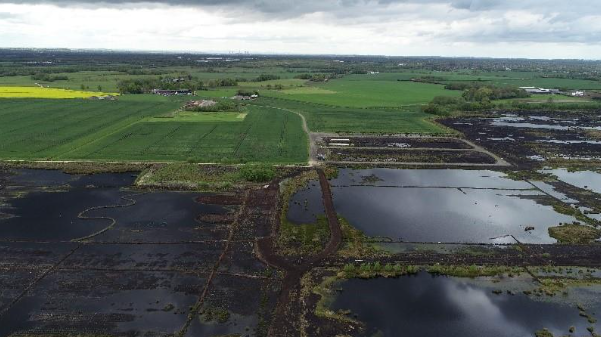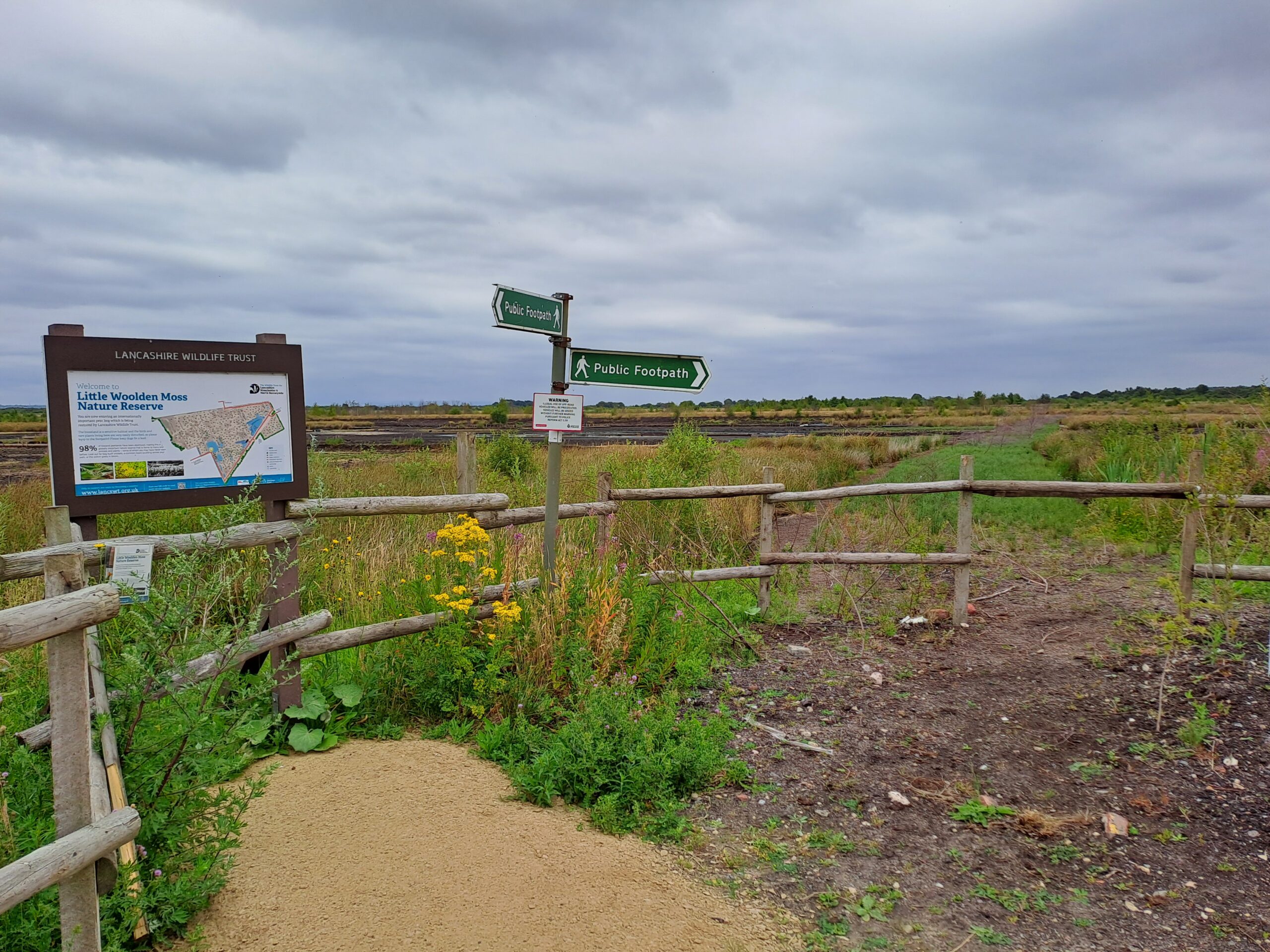Heritage in action: Forging the future of Chat Moss
The long-term vision of the project is to establish a recognised Landscape Heritage Park, where the rich history and heritage of Chat Moss supports an inclusive and resilient future for local communities and the environment. Through enhanced knowledge, interpretation, and access, it is hoped the project will create new opportunities for both visitors and neighbouring residents to engage with and benefit from this unique landscape.
- Client Hamilton-Davies Trust
- Location Chat Moss, Manchester
- Services
Assessing access and opportunity in the mosses
The project had two main objectives, the first was to map heritage and environmental assets, investigate the current access to the mosses, review current legislation and policy and undertake a stakeholder engagement exercise. The second was to identify opportunities, assets and constraints within the mosses and detail the outcomes of evidence based research in order to inform and develop sections of the feasibility report. Currently there is only limited access, so the potential for extending access through quick wins and longer term projects was also recommended.
Scoping heritage and environmental data for Chat Moss
For the purpose of this study, a site boundary with a 2km buffer zone was identified in order to define the evidence and data collection exercise. However, this study did not stand alone in the landscape, and there are significant interdependencies between sites and other projects that were not picked up within the defined area. A large portion of the land within Chat Moss and the surrounding study area is under a stewardship agreement or reserve programme. A number of sites are protected by Sites of Special Scientific Interest (SSSIs), Special Areas of Conservation (SACs) and Sites of Biological Importance (SBIs). There are also five Local Nature Reserves (LNR) within the mosses.
Whilst a 2km study area around the perimeter of Chat Moss was used for the majority of the data collection, the collection of Historic Environment Data was targeted on Chat Moss itself, rather than within the 2km study area. This was essential in order to narrow the scope of the assessment and cut out the large amount of data likely to be contained within the semi-urban areas surrounding the mosses not relevant to this particular scoping exercise. Using GIS a series of maps were created to spatially analyse the opportunities and constraints within and around Chat Moss.
Data was collected and collated in four stages:
- Initial data collection from publicly accessible records provided a baseline understanding and map of the immediate area on which to build in subsequent stakeholder engagement.
- A review of legislation and policy gauged how Chat Moss and its regeneration potential would fit into the policy context for Greater Manchester combined authorities and the three Local Authorities Chat Moss lies within.
- Ascertaining the level of existing data and information from the Core Group members and collecting this.
- A stakeholder engagement exercise and survey to assess and include what stakeholders consider to be significant heritage. This included intangible assets, natural heritage (such as beauty spots), environmental opportunities (re-wilding and nature recovery) and local ecological assets within the mosses. The engagement exercise and survey also sought to determine what stakeholders envision for the future of the mosses.
Connecting transport, heritage, and ecology
The data collection and mapping made it clear that a lack of access and transport options would be the main constraint for the vision. It highlighted key opportunities around public transport routes and stops, as well as cycle paths and hubs surrounding Chat Moss but few opportunities to gain actual access to the interior of the mosses.
The mapping also illustrated that the industrial and built heritage opportunities lie mainly on the fringes of the mosses, whilst natural heritage, archaeology and ecological opportunities lie more within the mosses. The opportunities are dissimilar but mutual as opening up more routes to connect the heritage and ecological opportunities would also increase engagement across the moss as a whole and diversify options for visitors. Creating connections between the cultural and natural heritage would also serve to highlight how intertwined human activity and the environment has been intrinsic to Chat Moss throughout its history.

13,000 years of landscape legacy
This connection is highlighted by the landscape legacy of the moss. Human activity has shaped the development of the landscape and continues to do so today. The peat in Chat Moss has been developing in the moss lands since the Palaeolithic and Mesolithic periods, around 13,000 years ago. Peat bogs hold significant value in preserving a record of human interaction with landscapes. It has historically been an important resource for exploitation. This has led to the development of a series of changing landscape identities throughout this period, with the heritage and archaeology of the area telling a story of the continuity of land use of the mosses.
A thorough understanding of how the landscape is currently being utilised, owned and accessed was therefore necessary to understand how a new landscape identity could be developed into the future.

Shaping Chat Moss through purposeful action
The feasibility study has illustrated the massive potential Chat Moss has to deliver a wide range of benefits, from being a 'green lung' for Manchester, to its rich ecological and heritage resource, to the social value it could provide with increased access and knowledge. A key comment raised throughout the feasibility study process was what the identity of Chat Moss should be going forwards: what started as a ‘Heritage Park’ has changed to a ‘Landscape Park’ at the suggestion of stakeholders who believed that the landscape and natural environment needed to be clearly included in the label for the area. A way forward for this has been presented in the form of task and finish activity strands, which will act as a mechanism to achieve the vision. Defining the strands of activity will ensure that activities align with one another and with the overarching vision.

If you have a similar project with a requirement for a multifaceted landscape assessment, contact our heritage team. Or to find out more about our broader offerings, click here.



